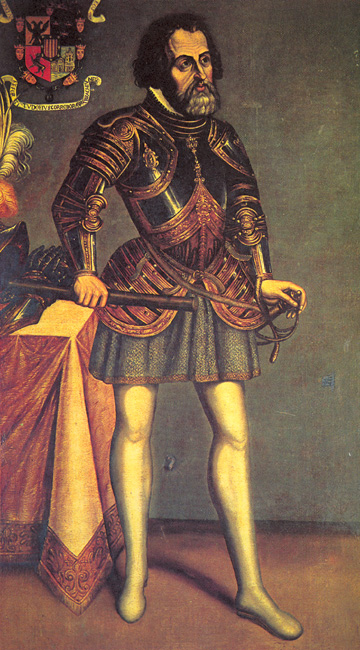
Hernán Cortés (1) |
 |
|---|
Source: Bradley Smith, Mexico: a History in Art. New York: Doubleday and Co., Inc, 170 Image: Portrait painting of Hernán Cortés. All details in this work are in the sixteenth-century Spanish Renaissance style: the pose, the knight's armor, the coat of arms, the simple elegance, the baton of command. Comments: The original painting can be found in the Hospital de Jesús in Mexico. Cortés founded this institution, the Hospital de Jesús. He was once buried there, but after his death in 1547 in Spain his body was actually moved a number of times. These places include the mausoleum built by and for the Duke of Medina in Sevilla, Spain. Cortés himself asked for his body to be buried in the monastery he wanted built in Coyoacán, México, where he had set up this first capital in the years immediately following the conquest of the Aztec empire. But the monastery was never built. In 1566, his body was sent to Mexico to be buried in a church in Texcoco, where his mother and one of his sisters were also buried, and where he had found the greatest number of allies in his war against the Mexica of Tenochtitlán. The Hospital de Jesús, now called the church and hospital of Jesús Nazareno (1521-1524) is located, apparently, where Cortés and Moctezuma had their first meeting in 1519; that is on Iztapalapa causeway leading Tenochtitlán. Humanities Questions: What does this painting tell us about Hernán Cortés's character and sense of style? What is the style of the painting itself? |
|---|